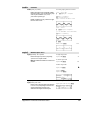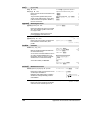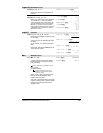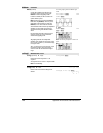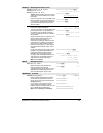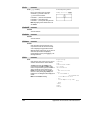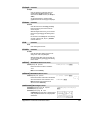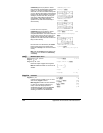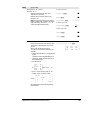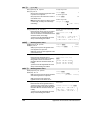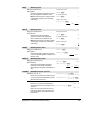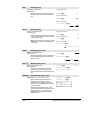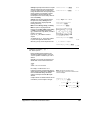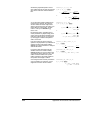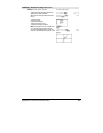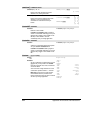
Appendix A: Functions and Instructions 795
cos() 2X key
cos(
expression1
) ⇒
⇒⇒
⇒
expression
cos(
list1
) ⇒
⇒⇒
⇒
list
cos(
expression1
) returns the cosine of the
argument as an expression.
cos(
list1
) returns a list of the cosines of all
elements in
list1
.
Note: The argument is interpreted as a degree,
gradian or radian angle, according to the current
angle mode setting. You can use ó,
G
orôto
override the angle mode temporarily.
In Degree angle mode:
cos((p/4)ô ) ¸
‡2
2
cos(45)
¸
‡2
2
cos({0,60,90})
¸ {1 1/2 0}
In Gradian angle mode:
cos({0,50,100}) ¸ {1
‡2
2
0}
In Radian angle mode:
cos(p/4) ¸
‡2
2
cos(45¡)
¸
‡2
2
cos(
squareMatrix1
) ⇒
⇒⇒
⇒
squareMatrix
Returns the matrix cosine of
squareMatrix1
. This is
not
the same as calculating the cosine of each
element.
When a scalar function f(A) operates on
squareMatrix1
(A), the result is calculated by the
algorithm:
1. Compute the eigenvalues (l
i
) and eigenvectors
(V
i
) of A.
squareMatrix1
must be diagonalizable. Also, it
cannot have symbolic variables that have not
been assigned a value.
2. Form the matrices:
B =
l
1
0
… 0
0
l
2
… 0
0
0
… 0
0
0
… l
n
and X = [V
1
,V
2
, … ,V
n
]
3. Then A = X B Xêand f(A) = X f(B) Xê. For
example, cos(A) = X cos(B) Xêwhere:
cos (B) =
)cos(00
000
0)cos(0
00)cos(
2
1
n
λ
λ
λ
…
…
…
…
All computations are performed using floating-
point arithmetic.
In Radian angle mode:
cos([1,5,3;4,2,1;6,ë2,1]) ¸
.212… .205… .121…
.160… .259… .037…
.248… ë.090… .218…



